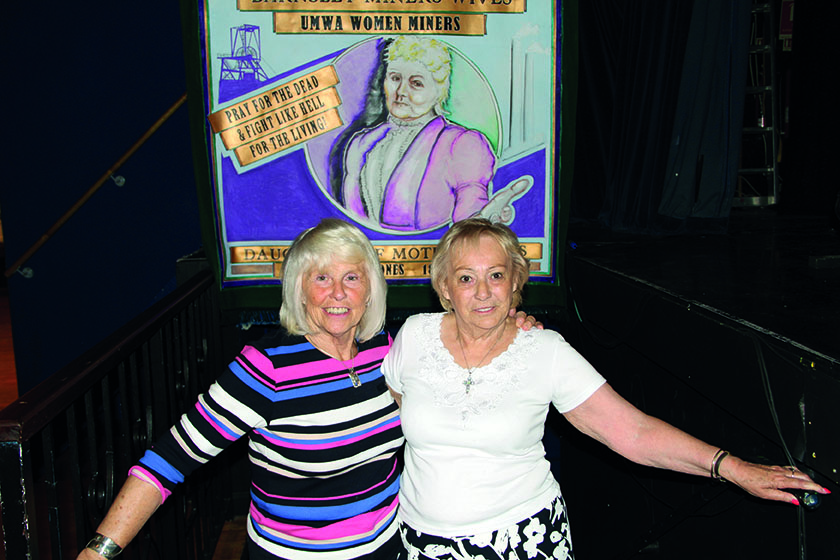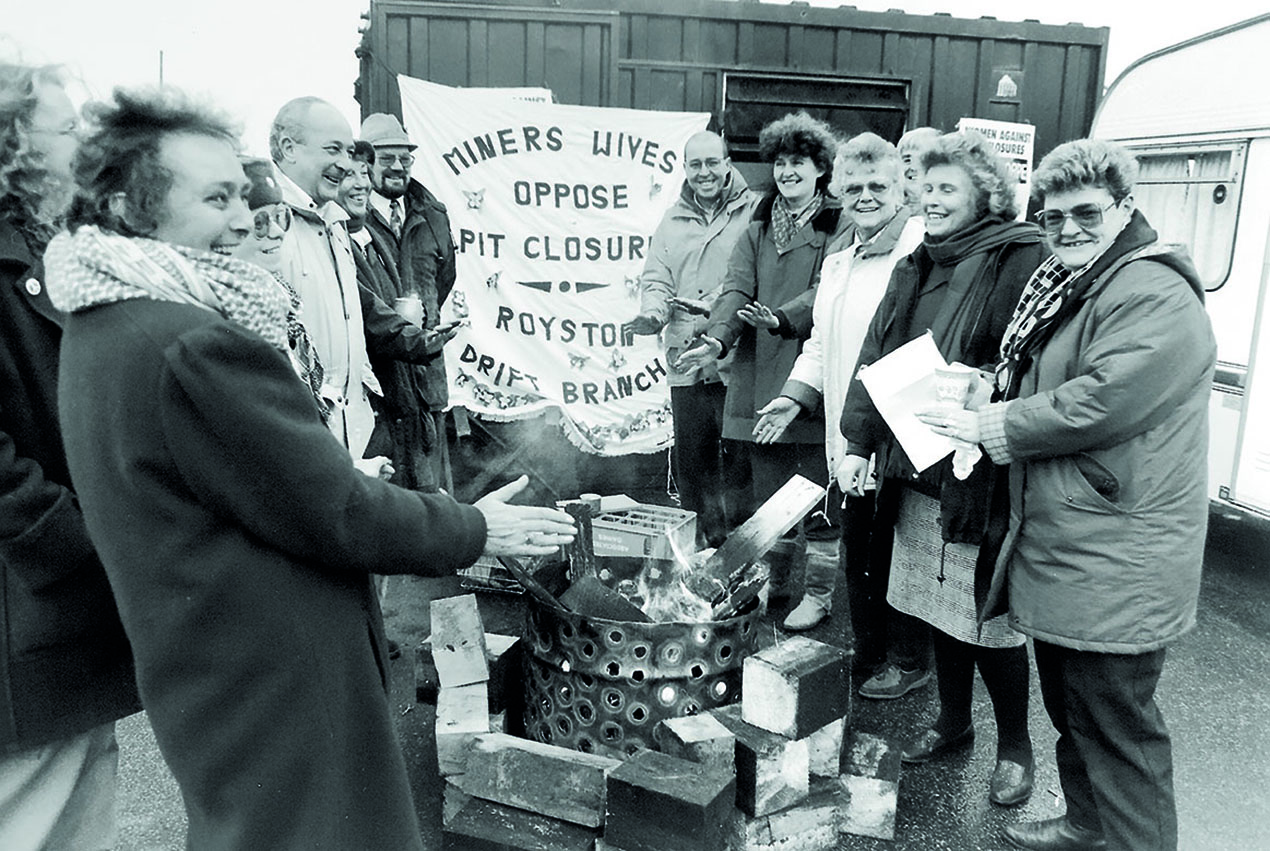A wife’s work
The miners’ strike of 1984-85 is recalled as a valiant fight by workers to save their jobs. Less well known is the part played by women
Type “Scargill” into any computer search box and the top result will be Arthur Scargill, president of the National Union of Mineworkers (NUM) from 1982 to 2002. That’s despite Scargill largely disappearing from view in the two decades since he was the most divisive figure in Britain, his name a byword for militant trade unionism.
He has never written a book about the years in which his flying pickets at coal depots and power stations brought down the government of Edward Heath in 1974 and tried to do the same to Margaret Thatcher during the historic miners’ strike a decade later. It has taken his ex-wife, Anne, to finally put the name “Scargill” on the cover of an autobiography.
Anne’s metamorphosis as an activist was easy, being married to the most famous trade unionist in Britain
It is not an embittered memoir of their marriage. Her decision to divorce her husband in 1998 gets no mention in the book’s 256 pages, and when asked why that is she answers: “I don’t want to do any mucky washing in public. Over the years some of the newspapers have offered me a lot of money to talk about Arthur. I am not in the slightest bit interested in taking them up on their offer. It’s enough to say that like a lot of couples, Arthur and me met when we were very young and we grew apart as we got older.”
The book is written with Betty Cook, her friend and co-activist in the Women Against Pit Closures movement, and chronicles in fascinating detail their very personal journeys from being wives of Yorkshire miners, running soup kitchens for strikers and their families in the 1980s, to becoming activists for workers’ and women’s rights on the world stage.
Now in their early eighties, both have similar back stories. Anne’s father was a miner at Woolley Colliery between Wakefield and Barnsley while Betty’s worked at Bentley pit near Doncaster. Anne got married to Arthur Scargill, then a young miner at Woolley, when she was expecting their only child at the age of 19. Betty was 18 and also pregnant when she married a young miner at Barnsley’s North Gawber Colliery, Don Cook. Anne spent most of her life doing clerical work at the local Co-op while Betty did a similar job at Empire Stores, a catalogue shopping company in Wakefield. And later on both women divorced their husbands as they became more involved in direct action campaigns and public speaking.

Betty’s journey is arguably the more remarkable. In the book she portrays her mum as strongly disapproving of her running a soup kitchen and joining picket lines, so much so that she was accused of not being fit to be a mother or a wife, while her ex-husband is depicted as a male chauvinist who came back from the pub and asked her for “bed work”.
Conversely, Anne’s metamorphosis as an activist was easy, being married to the most famous left-wing trade unionist in Britain. The Scargills went on holiday to Soviet-era Moscow, were fêted by senior Chinese government officials in Beijing and entertained as the personal guests of Cuba’s Marxist-Leninist leader Fidel Castro.
She and Betty met not in Yorkshire but at the now legendary women’s peace camp at Greenham Common, a United States Air Force base in Berkshire that became the focus of large protests by women against nuclear weapons in the 1980s. Betty was there because she’d become a union shop steward at Empire Stores and someone had suggested filling a coach of women trade unionists to join the demonstration. Also on the coach was Anne.
Betty found herself mixing with middle-class women from London who demanded to know if she was a feminist, a question she’d never been asked before and, she says, still can’t answer. Anne remembers frying bacon on a camping stove near to the peace camp and the posh women turning up their noses, saying they were vegetarian, but then “creeping out of the woods like fugitives” to cadge bacon sandwiches.
Betty was so horrified to witness a woman being hit on the arm by a baton-wielding security guard that she didn’t go back for a long time. “I wasn’t a political campaigner then,” she says. But on 6 March 1984 the shutdown of Cortonwood Colliery near Barnsley provoked a national miners’ strike. “That changed everything forever,” she writes in the book.
The pit’s closure was believed to be just the first of many, and the year-long strike was a fight to save the coalfield communities from destruction. Arthur Scargill warned that at least 20 pits would be closed with the loss of 20,000 jobs, a figure that turned out to be a huge underestimation of the intended cutbacks.
The Women Against Pit Closures movement was a spontaneous reaction to the sudden impoverishment of thousands of miners who suddenly had no money coming in. Though initially established to provide hot meals for families and hot drinks for pickets, it also developed into a women’s picketing strike force.
Anne says: “The 1984 strike was hard work, both emotionally and in the hours we were putting in. Betty and me were up early for picketing duty and then coming back to prepare food in the kitchens as well as doing our normal work. There was a lot of organising to do as well and that wears you down.
“We all had to stick together because we knew what hardships it would lead to. It doesn’t take a genius to work out that if you take people’s jobs away from them on such a scale then you’re going to have massive social problems in the future, and that for me was what the fight was about in the first place.”
Betty says her strongest memory of the strike was suddenly feeling angry. “We were so angry that the state was throwing everything at us. Nearly everybody in power seemed to be against us. I hadn’t previously realised how powerful the state was and what they would do to put working-class people down when they revolted.”
Even 35 years later, Betty’s fury at the way the miners were treated by police and politicians during the strike is still evident in her gentle voice. One of her many stories was of being threatened with arrest for unlawful assembly at Kiveton Park Colliery near Rotherham. “I was on my own! One person can’t be arrested for that. They just contrived evidence and told lies. It was unbelievable.”
Anne’s lasting memory is of a strip-search by police in Nottinghamshire after she was arrested on her first picket line. “I never got over it. When the policewoman told me to get undressed I made a joke out of it. I said: ‘Nay, love, I had a shower this morning before I came out.’ Then she got nasty. As far as I was concerned I had done nothing wrong. They held me for ages at the station in a pen they used for police dogs, then they made me strip for a search.”
Once the strike ended, Betty was unwilling to resume the life of a miner’s wife. “When the men went back to work I remember thinking that I didn’t have to be a drudge any more – I’m my own person. My husband was always telling me I was thick but I knew I wasn’t.”
She enrolled at an adult education college near Barnsley, then did a university degree in Sheffield.
With Anne, she began receiving invitations to address conferences in the UK and abroad. They were asked to speak at London events by Ken Livingstone and by coalfield activists in the US, as well as a mining community in Cuba. In 2004 they travelled to India to give speeches at the World Social Forum in Mumbai.
Meanwhile, the rundown of the mining industry continued with devastating effect on Yorkshire coalfield communities. Seven years after the strike ended the original closure list of 20 pits had grown to 125 and over 100,000 miners had lost their jobs. So when the announcement came that a further 31 were to close they decided to revive the Women Against Pit Closures movement. Recalling their visits to Greenham Common, they set up women’s camps at the gates of the threatened pits, though ultimately to no avail. The final pit to close was Kellingley near Pontefract in 2015*.
Betty says of the book: “We were just two out of hundreds and hundreds of women. We’re telling the story on behalf of all the others, and hopefully they will write their own history even if it’s in a little notebook for the family. It’s very important they chronicle what happened. Women’s history has been ignored over the years and if we can encourage working-class women to write things down it would be brilliant.”
You can read Shifting Perspective, about the last days of Kellingley, in the Features section of bigissuenorth.com. Anne & Betty: United By The Struggle, by Anne Scargill and Betty Cook with Ian Clayton, is published by Route, hardback £20
Main image:Miners’ wives oppose pit closures. Anne Scargill (second right) and Betty Cook (first left), Jan 1993. (Yorkshire Post/SWNS)
